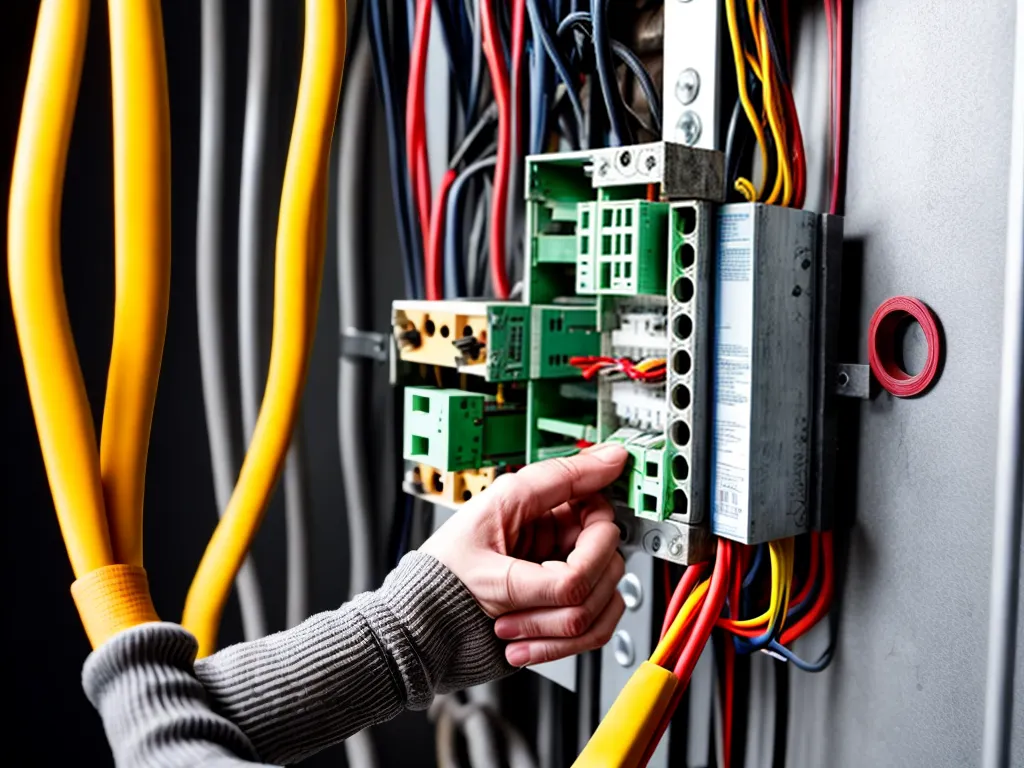
Industrial electrical systems can be complex and dangerous if not installed properly. As an industrial electrician for over 20 years, I've come across wiring standards and best practices that even some experienced electricians are unaware of. In this in-depth guide, I will share key industrial wiring standards to ensure safety and compliance.
Use The Correct Wire Size
Selecting the appropriate wire size is critical in industrial settings. Oversized wires waste money while undersized wires can overheat and cause fires. The National Electrical Code (NEC) specifies wire sizes based on ampacity and voltage drop limits.
- For power circuits, calculate the load current and use Table 310.15(B)(16) to select the wire size. Allow a safety margin by sizing wires for 125% of the calculated load current.
- For control circuits, #14 AWG wire is typically sufficient for 15 amp circuits within control panels. Use #12 AWG for 20-30 amp control circuits.
- When in doubt, go thicker. Upgrading wire gauge is cheaper than replacing wires that failed due to overheating.
Bold key: Always check NEC requirements when selecting wire sizes. Errors can lead to electrical code violations.
Maintain Proper Bending Radii
Sharply bending wires can damage the insulation and cause shorts or fires. NEC Table 312.6(A) lists the minimum bending radii for various wire types and thicknesses.
- For power wiring up to #1 AWG, maintain a bend radius at least 5 times the wire diameter.
- For larger 500 kcmil cables, the bend radius increases to 10 times the diameter.
- Provide proper support at bend points to avoid kinking or damage during installation.
Underline key: Gradual long radius bends minimize insulation damage in large industrial cables.
Use Strain Relief On Cable Terminations
Industrial environments vibrate constantly from heavy machinery. This vibration can break wire strands and cause loose connections over time.
Proper strain relief techniques prevent excessive vibration or movement of cables and wiring.
- Use cable clamps, grommets, or lugs to anchor cables at junction boxes and equipment terminations.
- Avoid sharp bends or excessive slack near terminations.
- Support heavy cables directly instead of terminating at a small device.
Strain relief protects wiring from fatigue and adds years to the system lifespan.
Class 1 Division 2 Wiring In Hazardous Locations
Certain industrial areas contain potentially explosive gases, vapors, or dusts. These hazardous locations require specialized electrical wiring methods to prevent sparks and overheating.
- Class 1 Division 2 areas require all wiring to be enclosed in dust/vapor-tight conduit. EMT, IMC, or rigid metal conduits are acceptable.
- Junction boxes must not contain any taps or splices. Seal off all conduits.
- Use explosion-proof switches, lights, and other devices that are rated for Division 2 areas.
Bold key: Never run unprotected cables in areas that contain hazardous dusts or vapors. Use rigid metal conduit for all wiring.
Balance Single Phase Loads
Three-phase power systems depend on balanced loads across the phases. Uneven loads can cause voltage imbalance and equipment problems.
- Distribute single phase loads evenly across phases A, B, and C.
- Alternate connections to the phases sequentially for outlets and equipment.
- Check voltage readings on each phase and rebalance loads if imbalance exceeds 1%.
Table comparing balanced vs unbalanced single phase loads:
| Balanced 3-Phase Loads | Unbalanced 3-Phase Loads |
|-|-|
| Equal current on phases A, B, C | Excess current on phase A |
| 120V between phases | Voltage imbalance |
| Equipment runs cooler | Equipment overheating |
Underline key: Proactively balance single phase loads instead of troubleshooting issues later.
Follow Arc Flash Safety Protocols
Industrial power systems carry high fault currents that can cause dangerous arc flash hazards and explosions. Take these precautions:
- Perform an arc flash study to identify hazard risk levels and required PPE.
- De-energize equipment before working on circuits. Follow lockout/tagout procedures.
- Wear non-melting arc rated PPE for any live panel work. Minimum rating is 4 cal/cm2.
- Install arc resistant switchgear and current limiting fuses to reduce arc blast energy.
Bold key: Arc flashes cause severe burns and even death. Rigorously follow arc flash safety protocols.
Conclusion
Mastering industrial wiring best practices takes years of experience. Reference the NEC frequently, and consult local inspectors whenever in doubt. Though the standards may seem tedious, proper installation technique greatly improves safety and prevents costly downtime from electrical failures. Use this guide as a supplement to your hands-on training and stay up-to-date on the latest code requirements.